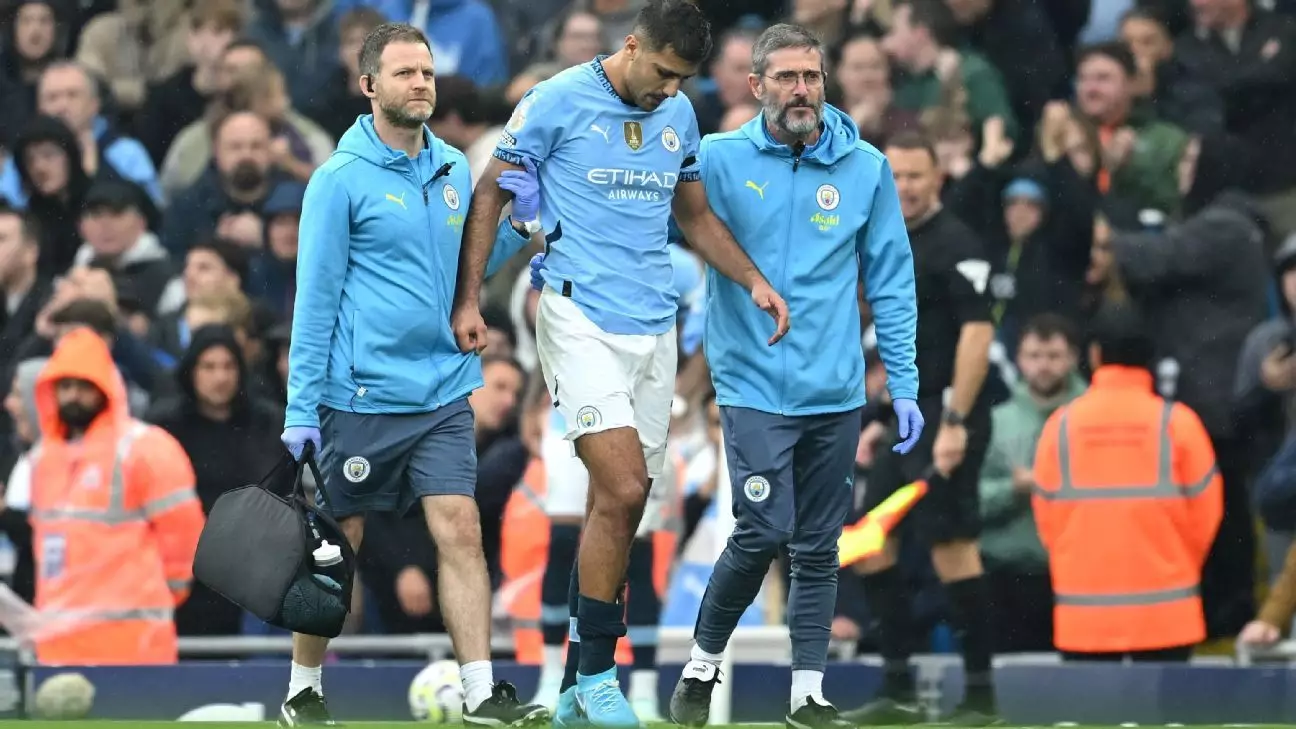The discussion surrounding the pressures of fixture congestion faced by elite footballers is intricate, characterized by a multitude of competing interests that complicate any notion of a straightforward solution. This situation transcends a mere dichotomy of “workers versus owners.” Instead, it reflects a network of various stakeholders with distinct agendas, often intermingling and conflicting within the broader framework of professional football. Understanding this complexity is crucial for addressing concerns about player welfare and the relentless schedule of games.
At the forefront of this ongoing discussion are elite players, the clubs they represent, governing bodies like UEFA and FIFA, and player unions. This doesn’t boil down simply to the players feeling overworked versus clubs merely seeking profit. Instead, it involves each party battling for their interests. For example, while stars such as Rodri and Erling Haaland express grievances regarding the arduous fixture schedules, they are also members of teams where some players may have missed out on precious playing time. Matheus Nunes, for instance, saw limited action with only 34 appearances last season. Herein lies the rub: even at clubs like Manchester City, where the elite compete for glory, not all players share the same perspective on game frequency.
Furthermore, the nature of player contracts often conflicts with the need for fewer games. Clubs thrive financially by maximizing their product: the matches they host, which generate ticket sales, merchandise revenue, and broadcasting income. The argument that less game time leads to reduced financial return is verified when considering the vast sums clubs invest in player wages. Yet, what about the players who hardly see the pitch? For them, fewer matches equate to fewer opportunities to perform, to develop, and ultimately, to secure a lasting career in professional football.
The tension lies noticeably in the actions of the player unions, which must represent a broad spectrum—from stars vying for game time to those relegated to the periphery. Their attempts to advocate for player welfare highlight crucial issues, including the notions of player “overload” and “underload.” This bifurcation of interest complicates the union’s stance. Whereas they are keenly aware of the detrimental effects of excessive fixtures on elite players, they also have the less popular class of players to consider—the regulars whose livelihoods depend on taking the pitch as often as possible.
The reality of fixture congestion can be traced back to the growing number of competitions introduced by UEFA and FIFA. Initiatives like expanded tournament formats were suggested as a means to enhance competitiveness and commercial viability of football. Ironically, this creates an environment where the same players, who enjoy the fame and fortune brought by exposure, are now grappling with chronic fatigue and burnout.
Searching for a resolution necessitates the acceptance of compromise from all parties involved. The players must be willing to engage in discussions surrounding wage adjustments in exchange for a reduced workload. Notably, as pointed out by Real Madrid manager Carlo Ancelotti, such concessions could lead to a healthier work-life balance for players, ultimately benefiting their longevity in the sport. This notion of pay cuts in exchange for fewer matches is not merely an abstract theoretical proposition; it’s a feasible path that could pave the way toward a more sustainable future in football.
Imagine a scenario where star players negotiate contracts that align their availability with their economic expectations. A model could emerge wherein a star player like Haaland agrees to play less, in return for a commensurate salary reduction. This may go against the grain of how contracts are currently structured, but adapting to meet evolving challenges is crucial. The potential for players to manage their health and performance optimally is imperative and may transform the approach clubs adopt towards scheduling matches.
Each layer of this conversation encapsulates a broader truth: the existing economic model of football is under strain. The insatiable thirst for revenue has led clubs to overcommit and overextend their schedules, all while creating an unsustainable environment for players. The cycle of growth for clubs often leads to dire consequences for player health. This state is unacceptable, especially as the landscape of football evolves alongside modern understandings of athlete welfare.
As football stakeholders grapple with the realities of fixture overload, it is vital to acknowledge the structures in place that dictate their interactions. Moving forward, a paradigm shift toward prioritizing player health without sacrificing commercial incentives is not merely advisable but necessary. A collaborative approach towards finding mutually beneficial solutions may indeed reshape the future of football, providing both fans with thrilling matches and players with sustainable, healthy careers. When this balance is achieved, stakeholders across the board will ultimately thrive.

Leave a Reply